当前位置:网站首页>Common components of flask
Common components of flask
2022-07-04 07:40:00 【A-L-Kun】
List of articles
Flask Common components
One 、 flask_session
session Is based on cookie Realization , The key value pair stored in the server ( In the form of { Random string :'uuid'}), At the same time in the browser cookie It also corresponds to the same random string , Used to request again When to verify , The function of this component is to session Data is stored in the database
1、 Common configuration
# Yes session To protect
SECRET_KEY = os.urandom(32) # Create key
SESSION_USE_SIGNER = True # Whether signature protection
PERMANENT_SESSION_LIFETIME = timedelta(minutes=30) # Set the time delay
SESSION_REFRESH_EACH_REQUEST = True # Update every time you refresh session
SESSION_TYPE = "redis" # Set up redis Storage session data
SESSION_REDIS = Redis("127.0.0.1") # Connect to database
SESSION_PREFIX = "MyWebPrefix:" # Set up session Prefix , The default is session:
Be careful :
sessionStored in is a dictionary , When modifying the inside of the dictionary ( Level second ) Element time , Data will not be updatedresolvent :
We need to read some of the source code first
class SecureCookieSession(CallbackDict, SessionMixin): #: When data is changed, this is set to ``True``. Only the session modified = False # Only when session When the data inside changes , This will be set to True #: When data is read or written, this is set to ``True``. Used by accessed = False def __init__(self, initial: t.Any = None) -> None: def on_update(self) -> None: self.modified = True # If the data is updated , It will be changed to True, It will be right later session Set to cookies in """ if not (session.modified # If session modify , It will be reset to cookies in or ( session.permanent # Set to cookie Inside and app.config["SESSION_REFRESH_EACH_REQUEST"] # If True, Refresh every time )): return ... response.set_cookie(...) """ self.accessed = True # If session read , Will session write in response in """ if session.accessed: response.vary.add("Cookie") """ # take on_update() Pass to CallbackDict super().__init__(initial, on_update)resolvent :
Method 1
session.modified = True # Manually make session Marked as session Is modifiedMethod 2
app.config["SESSION_REFRESH_EACH_REQUEST"] = True # Update every refresh # meanwhile , After successful login , Set up session.permanent = True # The default is False, But if you use redis Words , You don't need to set up , His tacit view is that True
2、 Usage method
2.1 session_interface
adopt session_interface To set up
from flask_session import RedisSessionInterface
from flask import Flask
from os import urandom
from redis import Redis
app = Flask(__name__)
app.serect_key = urandom(32) # Set up 32 Bit random key
app.config["SESSION_USE_SIGNER"] = True
# adopt redis preservation session
app.session_interface = RedisSessionInterface(
redis=Redis("127.0.0.1"), # Connect Redis database
key_prefix="flask_login", # Set the prefix of random string , The default is session:
)
Default session Set to
from flask.sessions import SecureCookieSessionInterface app.session_interface = SecureCookieSessionInterface()After modification , You can use it directly , Its use method is the same as the original one
2.2 config
Set... Through the configuration file
from flask_session import Session
from flask import Flask
from os import urandom
from redis import Redis
settings = {
"SESSION_TYPE": "redis", # Use redis Database connection
"SESSION_REDIS": Redis("127.0.0.1"), # Connect redis database
"SECRET_KEY": os.urandom(32), # Create key
"SESSION_USE_SIGNER": True, # Whether signature protection
"SESSION_REFRESH_EACH_REQUEST": True, # Update the data every time you refresh
}
app.config.from_mapping(settings) # Set configuration
Session(app) # The settings are encapsulated inside app.session_interface Methods
Two 、 DBUtils
1、 introduction
When we want to operate the database , You can do this :
import pymysql
from functools import wraps
SQL_CONFIG = {
# Configuration of database
"host": "127.0.0.1",
"port": 3306,
"user": "root",
"passwd": "qwe123",
"db": "flask1",
}
def sql_outer(fun):
""" Use decorators , It can operate the database conveniently """
@wraps(fun)
def inner(sql, *args):
conn = pymysql.connect(**SQL_CONFIG) # Connect to database
cursor = conn.cursor(cursor=pymysql.cursors.DictCursor) # Returns the dictionary type SQL data
obj = fun(sql, cursor, *args) # Pass parameters into the function , Run
conn.commit() # Commit transaction
cursor.close() # Close cursor
conn.close() # Close the connection
return obj # Return the data
return inner
class SQLTool:
@staticmethod
@sql_outer
def fetch_all(sql: "sql sentence ", cursor=None, *args: " Data to query "):
# print(*args)
cursor.execute(sql, *args) # Note that string splicing cannot be used , prevent SQL Inject
obj = cursor.fetchall() # Get all the data
return obj
@staticmethod
@sql_outer
def fetch_one(sql: "sql sentence ", cursor=None, *args: " Data to query "):
cursor.execute(sql, *args) # Note that string splicing cannot be used , prevent SQL Inject , At the same time, unpack tuples
obj = cursor.fetchone() # Get the first data
return obj
if __name__ == '__main__':
obj = SQLTool.fetch_one("SELECT id, name FROM users WHERE name=%s and pwd=%s", ["kun", "123"])
print(obj)
The problem is coming. , If there are many connections , Is it troublesome to open the database and then close it ?
- We can use database connection pool :
DBUtils
2、 DBUtils
Use database connection pool
This connection pool has two modes :
- Create a connection for each thread , Even if the thread calls close Method , It won't shut down , Just resend the connection to the connection pool , For its own thread to use again . When the thread terminates , Connection automatically closed
- Create a batch of connections to the connection pool , For all threads to share ( The main )
2.1 Model a
POOL = PersistentDB(
creator=pymysql, # Use the linked database module
maxusage=None, # The maximum number of times a link is reused ,None Means unlimited
setsession=[], # List of commands to execute before starting a session . Such as :["set datestyle to ...", "set time zone ..."]
ping=0,
# ping MySQL Server side , Check if the service is available .# Such as :0 = None = never, 1 = default = whenever it is requested, 2 = when a cursor is created, 4 = when a query is executed, 7 = always
closeable=False,
# If False when , conn.close() Actually ignored , For next use , When the thread is closed again , Will automatically close the link . If True when , conn.close() Then close the link , Then call... Again pool.connection It's a mistake , Because the connection is really closed (pool.steady_connection() You can get a new link )
threadlocal=None, # This thread only enjoys the worthy object , Used to save linked objects , If the linked object is reset
host='127.0.0.1',
port=3306,
user='root',
password='123',
database='pooldb',
charset='utf8'
)
def func():
conn = POOL.connection(shareable=False)
cursor = conn.cursor()
cursor.execute('select * from tb1')
result = cursor.fetchall()
cursor.close()
conn.close()
func()
2.2 Model 2
import time
import pymysql
import threading
from dbutils.pooled_db import PooledDB, SharedDBConnection
POOL = PooledDB(
creator=pymysql, # Use the linked database module
maxconnections=6, # The maximum number of connections allowed by the connection pool ,0 and None Indicates that there is no limit to the number of connections
mincached=2, # On initialization , At least free links created in the link pool ,0 Means not to create
maxcached=5, # The most idle links in the link pool ,0 and None Don't limit
maxshared=3, # The maximum number of links shared in the link pool ,0 and None Means share all .PS: It's useless , because pymysql and MySQLdb Wait for the module threadsafety All for 1, All values regardless of setting to ,_maxcached For ever 0, So always all links are shared .
blocking=True, # If there is no connection available in the connection pool , Whether to block waiting .True, wait for ;False, Don't wait and report an error
maxusage=None, # The maximum number of times a link is reused ,None Means unlimited
setsession=[], # List of commands to execute before starting a session . Such as :["set datestyle to ...", "set time zone ..."]
ping=0,
# ping MySQL Server side , Check if the service is available .# Such as :0 = None = never, 1 = default = whenever it is requested, 2 = when a cursor is created, 4 = when a query is executed, 7 = always
host='127.0.0.1',
port=3306,
user='root',
password='123',
database='pooldb',
charset='utf8'
)
def func():
# Check if the number of currently running connections is less than the maximum number of links , If not less than then : Waiting or reporting raise TooManyConnections abnormal
# otherwise
# The priority is to get the link from the link created during initialization SteadyDBConnection.
# And then SteadyDBConnection Objects are encapsulated in PooledDedicatedDBConnection And in return .
# If the link you first created doesn't have a link , To create a SteadyDBConnection object , Repackaged to PooledDedicatedDBConnection And in return .
# Once the link is closed , The connection is returned to the connection pool for subsequent threads to continue using .
conn = POOL.connection()
# print(th, ' The link was taken away ', conn1._con)
# print(th, ' There are... In the pool at present ', pool._idle_cache, '\r\n')
cursor = conn.cursor()
cursor.execute('select * from tb1')
result = cursor.fetchall()
conn.close()
func()
3、 Code encapsulation
#!/usr/bin/env python
# -*- coding: UTF-8 -*-
# @author: A.L.Kun
# @file : sql.py
# @time : 2022/6/5 0:29
import pymysql
from functools import wraps
# Create a database connection pool using singleton mode
from dbutils.pooled_db import PooledDB
import pymysql
SQL_CONFIG = {
# Configuration of database
"host": "127.0.0.1",
"port": 3306,
"user": "root",
"passwd": "qwe123",
"db": "flask1",
"charset": "utf8",
}
POOL_CONFIG = {
# Configuration of database connection pool
"maxconnections": 6,
"mincached": 2,
"maxcached": 5,
"maxshared": 3,
"blocking": True,
"maxusage": None,
"setsession": [],
"ping": 0,
}
POOL = PooledDB(
creator=pymysql,
**SQL_CONFIG,
**POOL_CONFIG
)
def select_sql(type_):
def sql_outer(fun):
""" Use decorators , It can operate the database conveniently """
@wraps(fun)
def inner(sql, *args):
if type_ == "sql":
""" If the value is obtained through the database """
conn = pymysql.connect(**SQL_CONFIG) # Connect to database
cursor = conn.cursor(cursor=pymysql.cursors.DictCursor) # Returns the dictionary type SQL data
obj = fun(sql, cursor, *args) # Pass parameters into the function , Run
conn.commit() # Commit transaction
cursor.close() # Close cursor
conn.close() # Close the connection
return obj # Return the data
elif type_ == "pool":
# Take values through the database connection pool
conn = POOL.connection()
cursor = conn.cursor(cursor=pymysql.cursors.DictCursor)
obj = fun(sql, cursor, *args)
conn.commit()
cursor.close() # Close cursor
conn.close() # Close the connection
return obj
raise ValueError("type_ value error, value = pool or sql")
return inner
return sql_outer
class SQLTool:
""" Use pymysql Single threaded connection """
@staticmethod
@select_sql("sql")
def fetch_all(sql: "sql sentence ", cursor=None, *args: " Data to query "):
# print(*args)
cursor.execute(sql, *args) # Note that string splicing cannot be used , prevent SQL Inject
obj = cursor.fetchall() # Get all the data
return obj
@staticmethod
@select_sql("sql")
def fetch_one(sql: "sql sentence ", cursor=None, *args: " Data to query "):
cursor.execute(sql, *args) # Note that string splicing cannot be used , prevent SQL Inject , At the same time, unpack tuples
obj = cursor.fetchone() # Get the first data
return obj
class DBUtilsTool:
""" Use database connection pool """
@staticmethod
@select_sql("pool")
def fetch_all(sql: "sql sentence ", cursor=None, *args: " Data to query "):
# print(*args)
cursor.execute(sql, *args) # Note that string splicing cannot be used , prevent SQL Inject
obj = cursor.fetchall() # Get all the data
return obj
@staticmethod
@select_sql("pool")
def fetch_one(sql: "sql sentence ", cursor=None, *args: " Data to query "):
cursor.execute(sql, *args) # Note that string splicing cannot be used , prevent SQL Inject , At the same time, unpack tuples
obj = cursor.fetchone() # Get the first data
return obj
obj = DBUtilsTool.fetch_one("SELECT id, name FROM users WHERE name=%s and pwd=%s", ["kun", "123"])
print(obj)
4、 combination flask Use
4.1 Mode one
The reason why it cannot be created is flask Context management mechanism , When flask Not yet run() When , cannot access current_app Configuration information inside
Put the configuration information into settings In profile , Reuse init_app Method —— simulation Session(app), Put the database connection pool into the configuration file config Inside
In the file where the database connection pool is stored sql.py in :
#!/usr/bin/env python
# -*- coding: UTF-8 -*-
# @author: A.L.Kun
# @file : sql.py
# @time : 2022/6/5 0:29
import pymysql
from functools import wraps
from flask import current_app
from dbutils.pooled_db import PooledDB
def sql_outer(fun):
""" Use decorators , It can operate the database conveniently """
@wraps(fun)
def inner(sql, *args):
# Take values through the database connection pool
POOL = current_app.config["SQL_POOL"] # Store it in the configuration file , Prevent the connection pool from not existing
conn = POOL.connection()
cursor = conn.cursor(cursor=pymysql.cursors.DictCursor)
obj = fun(sql, cursor, *args)
conn.commit()
cursor.close() # Close cursor
conn.close() # Close the connection
return obj
return inner
class DBUtilsTool:
""" Use database connection pool , simulation Session(app)"""
def __init__(self, app=None):
self.app = app
if app:
self.init_app(app)
def init_app(self, app):
POOL = PooledDB(
**app.config["POOL_CONFIG"]
)
app.config["SQL_POOL"] = POOL
@staticmethod
@sql_outer
def fetch_all(sql: "sql sentence ", cursor=None, *args: " Data to query "):
# print(*args)
cursor.execute(sql, *args) # Note that string splicing cannot be used , prevent SQL Inject
obj = cursor.fetchall() # Get all the data
return obj
@staticmethod
@sql_outer
def fetch_one(sql: "sql sentence ", cursor=None, *args: " Data to query "):
cursor.execute(sql, *args) # Note that string splicing cannot be used , prevent SQL Inject , At the same time, unpack tuples
obj = cursor.fetchone() # Get the first data
return obj
stay settings.py In file :
import pymysql
class BaseConfig:
POOL_CONFIG = {
# Configuration of database connection pool
"creator": pymysql,
"maxconnections": 6,
"mincached": 2,
"maxcached": 5,
"maxshared": 3,
"blocking": True,
"maxusage": None,
"setsession": [],
"ping": 4,
# Configuration of database
"host": "127.0.0.1",
"port": 3306,
"user": "root",
"passwd": "qwe123",
"db": "flask1",
"charset": "utf8",
}
stay manage.py In the main running program
from sql import DBUtilsTool
from flask import Flask
def create_app():
app = Flask(__name__)
app.config.from_object("settings.BaseConfig")
# simulation session_redis take app Pass in , Initialize database connection pool
DBUtilsTool(app) # At the beginning of the program ,flask It hasn't started yet , Just put the configuration file in it ,flask When it's on , The database connection pool has been stored in config in
return app
if __name__ == '__main__':
app = create_app()
app.run("0.0.0.0")
4.2 Mode two
Add the database connection pool directly to the configuration file
stay sql.py in
#!/usr/bin/env python
# -*- coding: UTF-8 -*-
# @author: A.L.Kun
# @file : sql.py
# @time : 2022/6/5 0:29
import pymysql
from functools import wraps
from flask import current_app
def sql_outer(fun):
""" Use decorators , It can operate the database conveniently """
@wraps(fun)
def inner(sql, *args):
# Take values through the database connection pool
POOL = current_app.config["SQL_POOL"] # Store it in the configuration file , Prevent the connection pool from not existing
conn = POOL.connection()
cursor = conn.cursor(cursor=pymysql.cursors.DictCursor)
obj = fun(sql, cursor, *args)
conn.commit()
cursor.close() # Close cursor
conn.close() # Close the connection
return obj
return inner
class DBUtilsTool:
""" Use database connection pool """
@staticmethod
@sql_outer
def fetch_all(sql: "sql sentence ", cursor=None, *args: " Data to query "):
# print(*args)
cursor.execute(sql, *args) # Note that string splicing cannot be used , prevent SQL Inject
obj = cursor.fetchall() # Get all the data
return obj
@staticmethod
@sql_outer
def fetch_one(sql: "sql sentence ", cursor=None, *args: " Data to query "):
cursor.execute(sql, *args) # Note that string splicing cannot be used , prevent SQL Inject , At the same time, unpack tuples
obj = cursor.fetchone() # Get the first data
return obj
stay settings.py in
from dbutils.pooled_db import PooledDB
class BaseConfig:
SQL_POOL = PooledDB(
# Configuration of database connection pool
"creator": pymysql,
"maxconnections": 6,
"mincached": 2,
"maxcached": 5,
"maxshared": 3,
"blocking": True,
"maxusage": None,
"setsession": [],
"ping": 4,
# Configuration of database
"host": "127.0.0.1",
"port": 3306,
"user": "root",
"passwd": "qwe123",
"db": "flask1",
"charset": "utf8",
)
stay manage.py in
from sql import DBUtilsTool
from flask import Flask
def create_app():
app = Flask(__name__)
app.config.from_object("settings.BaseConfig")
return app
if __name__ == '__main__':
app = create_app()
app.run("0.0.0.0")
Method 2 is not recommended , It does not achieve the effect of separating configuration from program
4.3 Method 3
Use pool.py Create inside POOL
from flask import current_app
POOL = PooledDB(
**current_app.config["POOL_CONFIG"]
)
stay sql.py in
#!/usr/bin/env python
# -*- coding: UTF-8 -*-
# @author: A.L.Kun
# @file : sql.py
# @time : 2022/6/5 0:29
import pymysql
from functools import wraps
# from .pool import POOL # Note that you cannot import here , because app Creation time , When registering blueprints ,app Not running , so current_app There is no configuration information in it
def sql_outer(fun):
""" Use decorators , It can operate the database conveniently """
@wraps(fun)
def inner(sql, *args):
# Take values through the database connection pool
from .pool import POOL # But when calling in the route, import ,app It must be running , so current_app There must be configuration information in it
conn = POOL.connection()
cursor = conn.cursor(cursor=pymysql.cursors.DictCursor)
obj = fun(sql, cursor, *args)
conn.commit()
cursor.close() # Close cursor
conn.close() # Close the connection
return obj
return inner
class DBUtilsTool:
""" Use database connection pool """
@staticmethod
@sql_outer
def fetch_all(sql: "sql sentence ", cursor=None, *args: " Data to query "):
# print(*args)
cursor.execute(sql, *args) # Note that string splicing cannot be used , prevent SQL Inject
obj = cursor.fetchall() # Get all the data
return obj
@staticmethod
@sql_outer
def fetch_one(sql: "sql sentence ", cursor=None, *args: " Data to query "):
cursor.execute(sql, *args) # Note that string splicing cannot be used , prevent SQL Inject , At the same time, unpack tuples
obj = cursor.fetchone() # Get the first data
return obj
it is to be noted that
current_appThe founding period of , Other methods of use are the same
Just write native SQL, Use the database connection pool
3、 ... and 、 wtforms
effect : Used exclusively for python web The framework does form validation
1、 Supported fields
| Field | describe |
|---|---|
| StringField | The text field |
| TextAreaField | Multiline text fields |
| PasswordField | Password text field |
| HiddenField | Hide text fields |
| DateField | The text field , The value is datetime.date Format |
| DateTimeField | The text field , The value is datetime.datetime Format |
| IntegerField | The text field , The value is integer. |
| DecimalField | The text field , The value is decimal.Decimal |
| FloatField | The text field , The value is a floating-point number |
| BooleanField | Check box , The value is True and False |
| RadioField | A set of menus |
| SelectField | The drop-down list |
| SelectMultipleField | The drop-down list , Multiple values can be selected |
| FileField | File upload field |
| SubmitField | Form submit button |
| FormField | Embed another form field |
| FieldList | A set of fields of a specified type |
2、 Field parameters
| Parameters | describe |
|---|---|
| label | Field alias , In the page can be through the field .label Exhibition |
| validator | List of validation rules |
| filters | List of chlorine perchlorators , Used to filter the submitted data |
| description | Description information , Usually used to generate help information |
| id | It means that form The position of the field when the class is defined , Usually you don't have to define it , The default is to sort in the order defined |
| default | The default value is |
| widget | html plug-in unit , With this plug-in you can override the default plug-in , More through user customization |
| render_kw | Customize html attribute |
| choices | Check the options of the type |
3、 Validation function
| Validation function | explain |
|---|---|
| Verification is an email address | |
| EqualTo | Compare the values of two fields ; It is often used in the case that you need to enter the key twice for confirmation |
| IPAddress | verification IPv4 network address |
| Length | The length of the input string |
| NumberRange | Verify that the value entered is in the numeric range |
| Optional | Skip other validation functions when there is no input value |
| DataRequired | Make sure there is data in the field |
| Regexp | Use regular expressions to validate input values |
| URL | verification url |
| AnyOf | Make sure the input value is in the list of optional values |
| NoneOf | Make sure the input value is not in the optional list |
According to the source code of the verification function , Customize the validation function
4、 Code instance
Create a function of uploading files app, It contains the analysis of the key steps of its workflow , Hope it is useful for understanding
Code instance :
stay app.py in
from flask import Flask
from wtforms import FileField, Form, SubmitField, widgets, validators
from flask import (request, render_template, current_app)
from werkzeug.utils import secure_filename
import os
class UploadForm(Form):
""" Create fields for uploading files """
# UploadForm.checkbox = UnboundField(BooleanField, *args, **kwargs, creation_counter=1)
file1 = FileField(
render_kw={
"class": "file"},
widget=widgets.FileInput(),
validators=[
validators.DataRequired(message=" Please select the file to upload !")
]
)
# UploadForm.sbtn = UnboundField(SubmitField, *args, **kwargs, creation_counter=2)
sbtn = SubmitField(
render_kw={
"id": "upload_submit",
"value": " Upload files ",
},
widget=widgets.SubmitInput(),
)
config = {
"UPLOAD_FOLDER": "upload/", # Set the folder where files are stored
}
app = Flask(__name__)
app.config.from_mapping(config)
@app.route("/upload", methods=['GET', 'POST'])
def upload():
# The route used to specially handle the submitted data
if request.method == "POST":
form = UploadForm(formdata=request.files) # Upload files
if form.validate(): # Validate the data
f = form.file1.data
f.save(os.path.join(current_app.config['UPLOAD_FOLDER'], secure_filename(f.filename))) # Handle the file name safely
return render_template("index.html", form=form, msg=f" Upload file successful ! The uploaded file is {
f.filename}")
else:
return render_template("index.html", form=form, msg=" Please select a file !")
form = UploadForm()
""" # Analyze the source code when creating this class metaclass=FormMeta # It is a metaclass # so , When you create an object 1、 FormMeta.__call__ # stay __call__ Method UploadForm._unbound_fields = None UploadForm._wtforms_meta = None _unbound_fields = [ # Its basis counter Sort by ("checkbox": UnboundField(BooleanField, *args, **kwargs, creation_counter=1)) ("sbtn": UnboundField(SubmitField, *args, **kwargs, creation_counter=1)) ] _wtforms_meta = type("Meta", tuple([DefaultMeta]), {}) # DefaultMeta = Form.Meta = class Meta(DefaultMeta): pass 2、 UploadForm.__new__ # stay __new__ Method , And then it turns out that there's no __new__ Method , Unless you customize pass 3、 UploadForm.__init__ # perform __init__ Method UploadForm()._fields = { "file1": FileField(...), "sbtn": SubmitField(...) } UploadForm().name=FileField(...) UploadForm().sbtn=SubmitField(...) """
print(form.file1)
""" # Source code analysis when accessing class properties # so ,form.name It executes __str__ Method Field.__str__ -> return self() # Execution field __call__ Method Field.__call__ -> return self.meta.render_field(self, kwargs) DefaultMeta.render_field(self, kwargs) -> return field.widget(field, **render_kw) # perform widget Of __call__ Method Input.__call__ -> return Markup("<input %s>" % self.html_params(name=field.name, **kwargs)) # Rendering """
for i in form:
print(i) # Find out i It can be traversed ,
""" # There is a iter Method BaseField.__iter__ -> iter(self._fields.values()) print(i) # Execute __str__ Method """
return render_template("index.html", form=form)
if __name__ == '__main__':
app.run()
And the verification process , Try it on your own
stay templates/index.html in
<!DOCTYPE html>
<html lang="en">
<head>
<meta charset="UTF-8">
<title> Upload files </title>
</head>
<body>
<div class="uploadFile">
<h1> Please select the file to upload </h1>
<form method="POST" enctype="multipart/form-data">
<p>{
{
form.file1 }}</p>
<p style="color: red">{
{
form.file1.errors[0] }}</p>
<p>{
{
form.sbtn }}</p>
</form>
<p style="color: green">{
{
msg }}</p>
</div>
</body>
</html>
Four 、 flask_mail
1、 brief introduction
stay web In the program , You often need to send email . such as , Send a confirmation email when the user registers an account ; Send popular content or promotional information to users regularly . stay Web Sending email in the program is not complicated , With expansion Flask-Mail Or a third-party email service , It only takes a few lines of code to send an email
Configuration information :
| Parameters | describe |
|---|---|
| MAIL_SERVER | The name of the mail server /IP Address |
| MAIL_PORT | Port number of the server used |
| MAIL_USE_TLS | Enable / Disable transport security layer encryption |
| MAIL_USE_SSL | Enable / Disable secure socket layer encryption |
| MAIL_DEBUG | Debugging support , The default is Flask Debug state of the application |
| MAIL_USERNAME | The user name of the sender |
| MAIL_PASSWORD | The sender's password |
| MAIL_DEFAULT_SENDER | Set the default sender |
| MAIL_MAX_EMAILS | Set the maximum messages to send |
| MAIL_SUPPRESS_SEND | If app.testing Set to true, Then the transmission is suppressed |
| MAIL_ASCII_ATTACHMENTS | If set to true, Convert the attached file name to ASCII |
2、 Mail
It manages the requirements for email messages . Class constructors take the form
| Method | describe |
|---|---|
| send() | send out Message The content of the class object |
| connect() | Open connection with mail host |
| send_message() | Send message to |
3、 Massage
3.1 Instantiate objects
Message(
subject='', # Set title
recipients=[], # The recipient
body=None, # Content
html=None,
sender=None, # Sender
cc=None,
bcc=None,
attachments=None, # The attachment
reply_to=None,
date=None,
charset=None,
extra_headers=None,
mail_options=None,
rcpt_options=None
)
3.2 Class method
attach() - Add attachments to the message . The method uses the following parameters :
filename- The name of the file to attachcontent_type- Of documents MIME typedata- Raw file datadisposition- Content handling , If any
add_recipient() - Add another recipient to the message
4、 Usage method
Initialize mailbox
from flask_mail import Mail, Message mail = Mail(app)Configure mailbox information
class BaseConfig2(): MAIL_SERVER = "smtp.qq.com" # Set up SMTP The server MAIL_PORT = 465 # Set port MAIL_USE_TLS = False # Whether to use TLSSL encryption MAIL_USER_SSL = True # Whether to use SSL encryption MAIL_USERNAME = "[email protected]" # mailbox MAIL_PASSWORD = "xtisaddfdfntdcjf" # password MAIL_DEFAULT_SENDER = "A.L.Kun<[email protected]>" # SenderCreate information
msg = Message(subject="This is title", recipients="[email protected]") msg.body = "This is body"Send a message
mail.send(msg)
Master code :
#!/usr/bin/env python
# -*- coding: UTF-8 -*-
__author__ = "A.L.Kun"
__file__ = "app_.py"
__time__ = "2022/6/24 19:56"
__email__ = "[email protected]"
from settings import BaseConfig2
from flask import Flask
from flask_mail import Mail, Message
app = Flask(__name__)
app.config.from_object(BaseConfig2)
mail = Mail(app)
@app.route('/')
def hello():
msg = Message(subject="This is title", recipients="[email protected]")
msg.body = "This is body"
message.html = render_template('content.html') # Can send a html page
mail.send(msg)
return " Message sending completed !"
if __name__ == '__main__':
app.run(debug=True)
5、 ... and 、 flask_script
1、 brief introduction
install :pip install flask-script
By using Flask-Script Expand , We can do it in Flask When the server starts , Pass in the parameters... On the command line . Not just through app.run() In the method, pass on the parameter , For example, we can go through python hello.py runserver –host ip Address , Tell the server which network interface to listen for connections from clients
2、 Start the service
from flask import Flask
app = Flask(__name__)
""" Use flask-script Start project """
from flask_script import Manager
manager = Manager(app)
@app.route('/')
def index():
return 'hello world'
if __name__ == "__main__"
manager.run()
Enter at the command line
python manage.py runserver, Start the service
3、 Pass in the parameter
from flaskScript import create_app
from flask_script import Manager
app = create_app() # Return to one app object
manager = Manager(app)
@manager.command
def custom(arg):
""" This method can receive parameters input from the command line , Positional arguments Such as : function :python manage.py custom 123 It will print on the console 123 """
print(arg)
@manager.option("-n", "--name", dest='name')
@manager.option("-u", "--url", dest="url")
def cmd_(name, url):
""" Custom command , Optional parameters :param name: Name passed in from the command line :param url: Passed in from the command line url :return: Such as : Input :python manage.py cmd_ -n "lihua" -u "127.0.0.1" Will output :lihua 127.0.0.1 """
print(name, url)
if __name__ == '__main__':
manager.run()
effect :
python manage.py runserver ...python manage.py Custom command
6、 ... and 、 flask_sqlalchemy
1、 brief introduction
sqlalchemy There are sqlalchemy Some basic operations
flask Generally used in flask-sqlalchemy To manipulate the database , It's easy to use , Easy to operate
install :
pip install flask-sqlalchemy
Configuration parameters
| configuration option | explain |
|---|---|
SQLALCHEMY_DATABASE_URI | Connect to database . Example :mysql://username:[email protected]/post/db?charset=utf-8 |
SQLALCHEMY_BINDS | A dictionary that will bind multiple databases . For more details, please see the official text Bind multiple databases . |
SQLALCHEMY_ECHO | Debug set to true |
SQLALCHEMY_POOL_SIZE | The size of the database pool , The default value is 5. |
SQLALCHEMY_POOL_TIMEOUT | Connection timeout |
SQLALCHEMY_POOL_RECYCLE | Number of seconds to automatically reclaim connections . |
SQLALCHEMY_MAX_OVERFLOW | The maximum number of connections that can be created is . When these extra After the connection is recycled to the connection pool, it will be disconnected and discarded . |
SQLALCHEMY_TRACK_MODIFICATIONS | If I set it to True ( By default ),Flask-SQLAlchemy Changes to the object will be tracked and signaled . This requires additional memory , You can disable it if you don't need it . |
2、 Use steps
Configuration database information , stay
settings.pyAdd... To the fileSQLALCHEMY_DATABASE_URI = "mysql+pymysql://root:[email protected]:3306/flask1?charset=utf8" SQLALCHEMY_TRACK_MODIFICATIONS = False SQLALCHEMY_ECHO = TrueCreate a
app.pyfile , Add... To itfrom flask_sqlalchemy import SQLAlchemy db = SQLAlchemy() # Instantiate objects app = Flask(__name__) app.config.from_file("settings.py") # Import profile db.init_app(app) # initialization sqlalchemy, Use app The configuration file insideWrite the database structure , Create a
models.py, Andapp.pyAt the same levelfrom app import db class Users(db.Model): __table__ = "user" id = db.Column(db.INTEGER, primary_key=True, autoincrement=True) name = db.Column(db.String(32))Use in routing
import models @app.route("/login", methods=["GET", "POST"]) def login(): data = db.session.query(models.Users).all() # Find all the information in the database print(data) db.session.remove() # remove session return "Login"
Expand , Use of offline scripts
from app import app
with app.app_context():
pass # It can run flask Operations performed at runtime
7、 ... and 、 flask_migrate
effect : Do database migration
It depends on :flask-script/flask-sqlalchemy
from flask import Flask
from flask_sqlalchemy import SQLAlchemy
from flask_migrate import Migrate
from flask_script import Manager
app = Flask(__name__)
app.config['SQLALCHEMY_DATABASE_URI'] = "sqlite:///app.db" # Connect to database
db = SQLAlchemy(app)
manager = Manager(app)
Migrate(app, db) # Instantiated component
""" flask db init # Initialize the table flask db migrate # Create the table in the database flask db upgrade # Update the structure of the table """
# Model
class User(db.Model):
__tablename__ = "users"
id = db.Column(db.Integer, primary_key=True)
name = db.Column(db.String(128))
if __name__ == '__main__':
manager.run()
8、 ... and 、 Custom components
stay auto.py Add :
from flask import request, session, redirect
class Auth:
def __init__(self, app=None):
self.app = app
if app is not None:
self.init_app(app)
def init_app(self, app):
app.auto = self # Write all the information of this class app Inside
self.app = app
self.app.before_request(self.check_login)
def check_login(self):
print(" Check whether the user is logged in ")
usr = session.get("usr")
print(usr)
def login(self, data):
""" establish session"""
session["usr"] = data
def login_out(self):
""" The user to log out """
del session["usr"]
When using this component :
from auto import Auto
from flask import Flask
app = Flask(__name__)
at = Auto()
at.init_app(app)
################################################
from flask import current_app
cerrent_app.login_out() # Call the function of component login
Last , The general directory structure is :
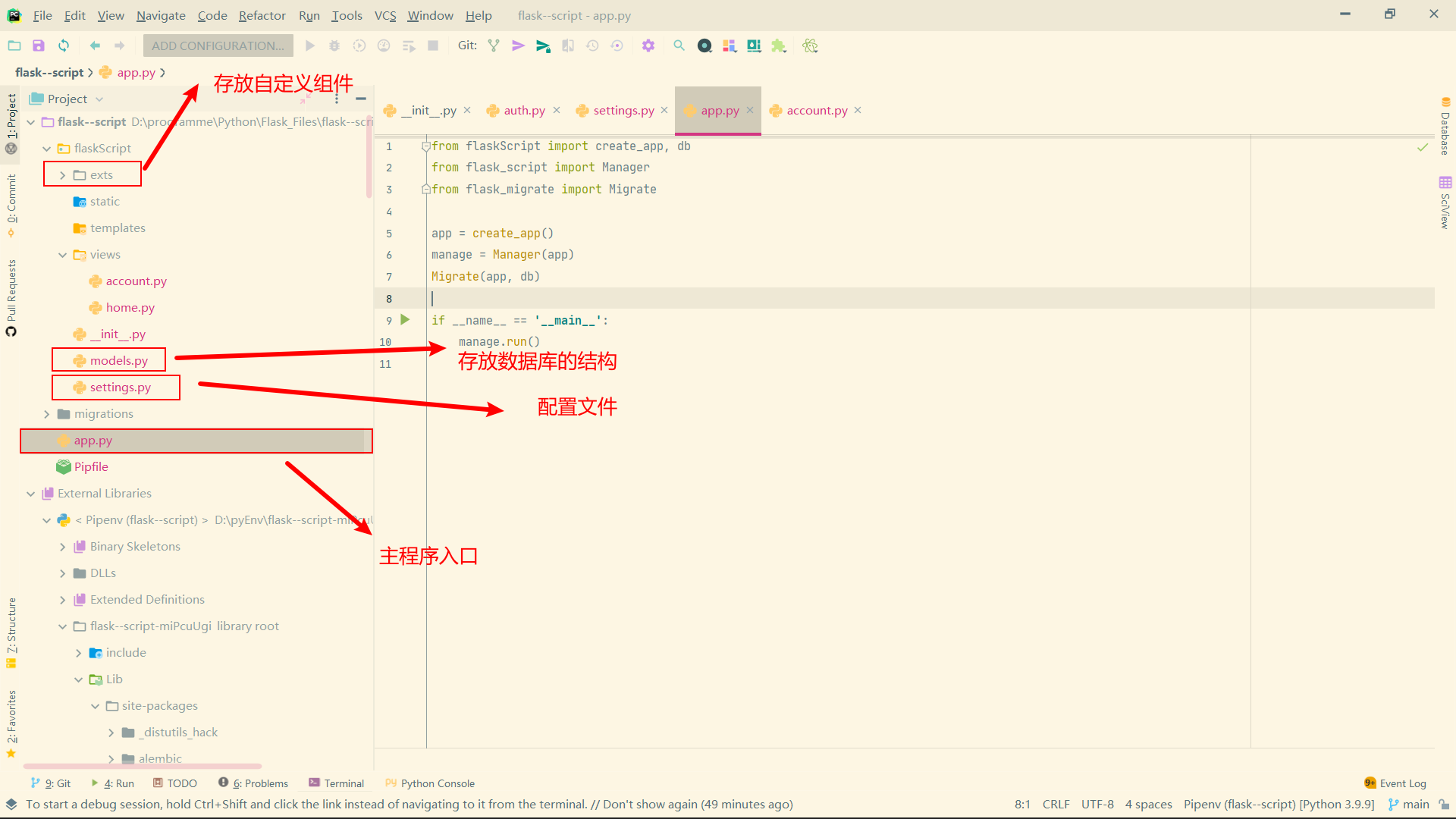
Click on the I , View the source code
Nine 、 Other
1、 many app application
from flask import Flask
from werkzeug.middleware.dispatcher import DispatcherMiddleware
from werkzeug.serving import run_simple
app01 = Flask("app01")
app02 = Flask("app02")
# //login -> visit app01 Below login
dm = DispatcherMiddleware(app01, {
"/app02": app02 # /appo2/index visit app02 Below index
})
@app01.route("/login")
def login():
return "app01.login"
@app02.route("/index")
def index():
return "app02.index"
if __name__ == '__main__':
# Once the request comes in, it will be executed run_simple The third parameter of the method is bracketed :dm(), Adding parentheses to an object will call the __call__ Method
run_simple("127.0.0.1", 5000, dm)
2、 The signal
from flask import Flask, signals
app = Flask(__name__)
def func(*args, **kwargs):
print(" Request start , The trigger app by ", *args, **kwargs)
signals.request_started.connect(func) # Connecting signals
""" All signals contained template_rendered before_render_template request_started request_finished request_tearing_down got_request_exception appcontext_tearing_down appcontext_pushed appcontext_popped message_flashed Here you can check the trigger conditions of these signals in the source code , Source code internal use send Method trigger signal , Or Baidu OK """
@app.route("/")
def index():
return " Homepage "
if __name__ == '__main__':
app.run(debug=True)
Be careful , The difference between a signal and a decorator is , The signal cannot control the progress of the program , It just provides a prompt function , Add additional operations and values to the original foundation ; The decorator can control whether the request can continue to be executed later
边栏推荐
- MySQL error resolution - error 1261 (01000): row 1 doesn't contain data for all columns
- Transition technology from IPv4 to IPv6
- 谷歌官方回应:我们没有放弃TensorFlow,未来与JAX并肩发展
- socket inet_ pton() inet_ Ntop() function (a new network address translation function, which converts the expression format and numerical format to each other. The old ones are inet_aton(), INET_ ntoa
- How to buy financial products in 2022?
- Activiti common operation data table relationship
- 博客停更声明
- flask-sqlalchemy 循环引用
- Application of isnull in database query
- L2-013 red alarm (C language) and relevant knowledge of parallel search
猜你喜欢

zabbix监控系统自定义监控内容
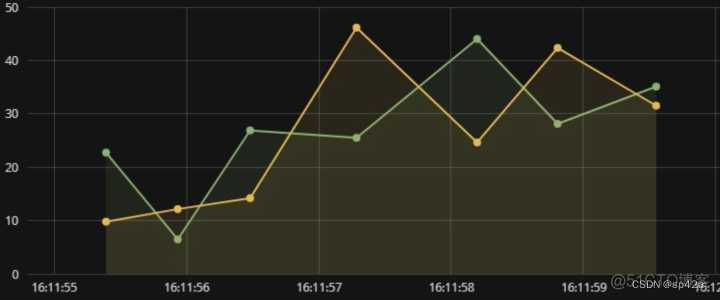
Easy to understand: understand the time series database incluxdb
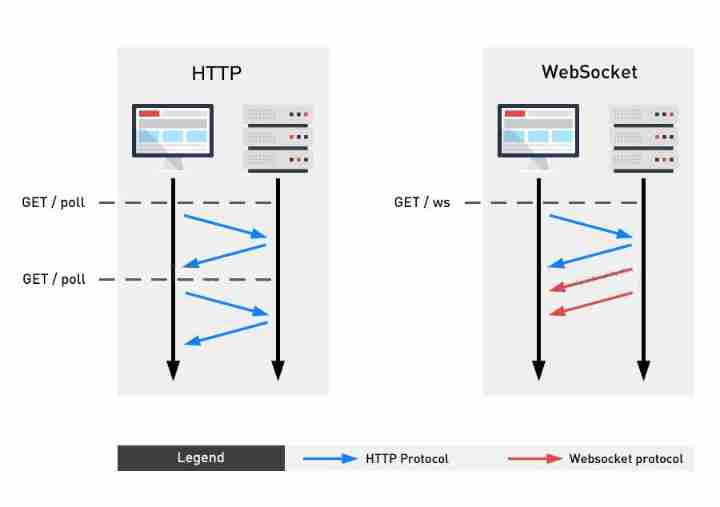
I was pressed for the draft, so let's talk about how long links can be as efficient as short links in the development of mobile terminals
![[Mori city] random talk on GIS data (I)](/img/e4/2a2ceb10a2c0285cdd0c922f827930.png)
[Mori city] random talk on GIS data (I)
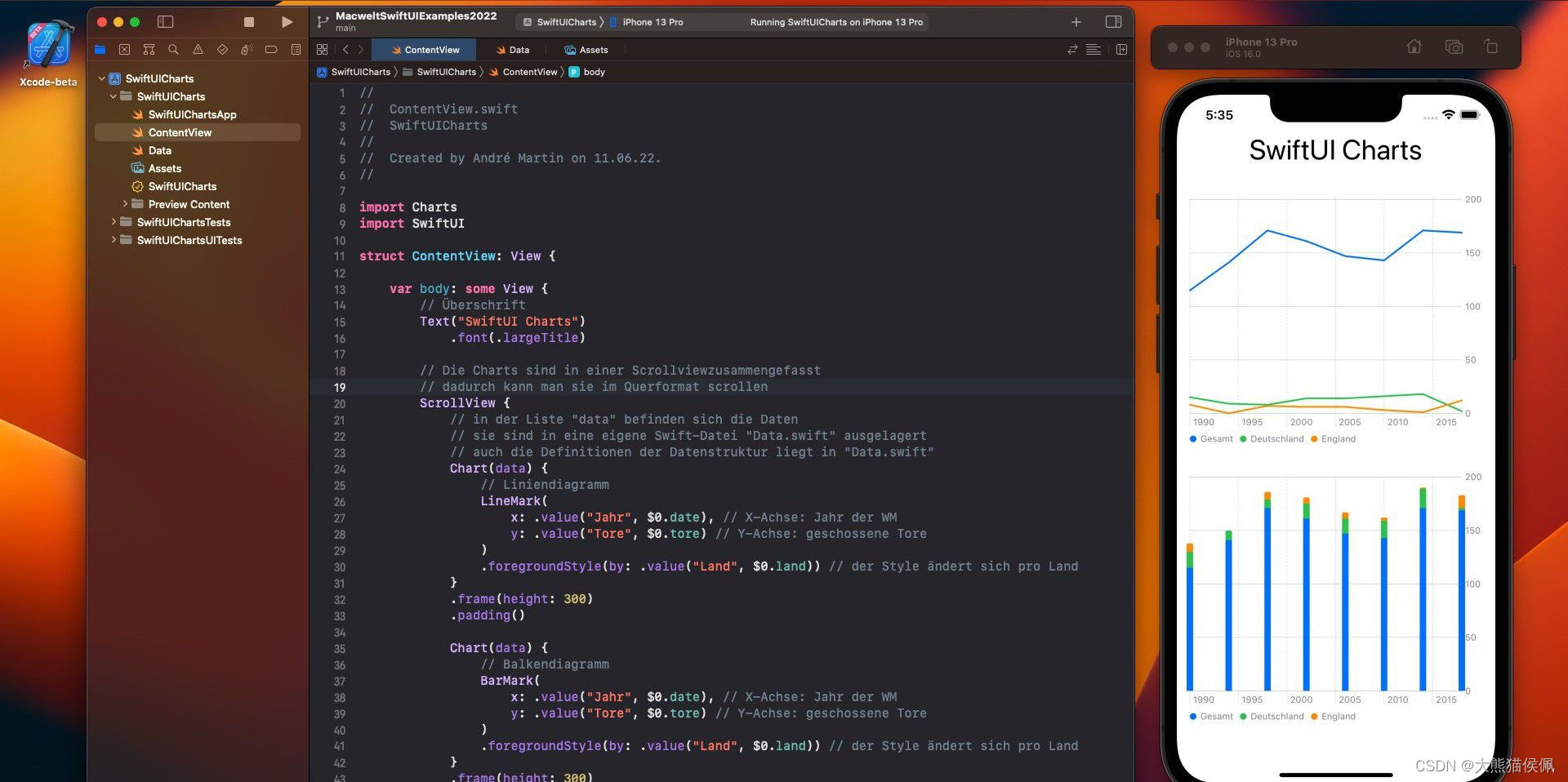
在所有SwiftUI版本(1.0-4.0)中原生实现Charts图表视图之思路
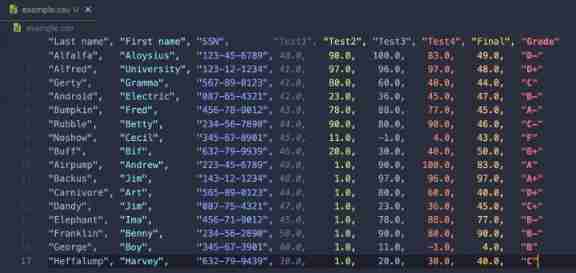
Take you to master the formatter of visual studio code

University stage summary

【Kubernetes系列】Kubernetes 上安装 KubeSphere

Heap concept in JVM

深入浅出:了解时序数据库 InfluxDB
随机推荐
谷歌官方回应:我们没有放弃TensorFlow,未来与JAX并肩发展
Practice (9-12 Lectures)
flask-sqlalchemy 循环引用
Valentine's Day is coming! Without 50W bride price, my girlfriend was forcibly dragged away...
Is l1-029 too fat (5 points)
Introduction to rce in attack and defense world
[Flink] temporal semantics and watermark
Amd RX 7000 Series graphics card product line exposure: two generations of core and process mix and match
Two years ago, the United States was reluctant to sell chips, but now there are mountains of chips begging China for help
[Android reverse] function interception (use cache_flush system function to refresh CPU cache | refresh CPU cache disadvantages | recommended time for function interception)
University stage summary
This monitoring system can monitor the turnover intention and fishing all, and the product page has 404 after the dispute appears
How to reset IntelliSense in vs Code- How to reset intellisense in VS Code?
With excellent strength, wangchain technology, together with IBM and Huawei, has entered the annual contribution list of "super ledger"!
节点基础~节点操作
Basic DOS commands
Implementation of ZABBIX agent active mode
Advanced MySQL: Basics (5-8 Lectures)
2022-021ARTS:下半年开始
21个战略性目标实例,推动你的公司快速发展